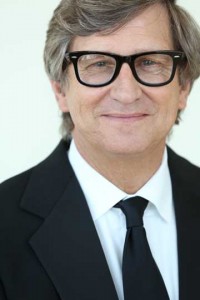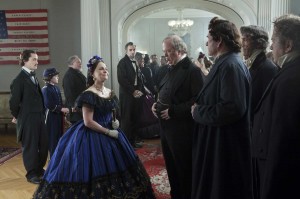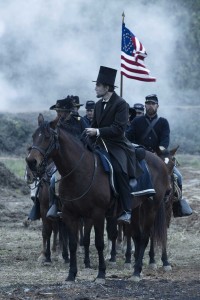
Lincoln, director Steven Spielberg’s compelling depiction of the final four months of Abraham Lincoln’s presidency as he pressed Congress to pass the 13th Amendment to the Constitution to abolish slavery, was filmed entirely in Virginia’s state capital, Richmond, which ironically was the capital of the Confederacy during the Civil War. Oscar-winning production designer Rick Carter had visited a number of cities to find one that, in terms of its look, would be a good setting for the shoot. “Richmond still retained a 19th century appearance and atmosphere that resembled what Washington D.C. might have looked like when Lincoln was president,” he said.
The magnificent state capitol building resembled the White House from certain angles. And its legislative chamber could easily double for the U.S. House of Representatives, the setting for the movie’s fierce debates over the 13th Amendment. And Spielberg found it gratifying to film in Richmond, which went out of its way to cooperate with the shoot.
Carter said his approach was to be “both real and intimate,” while adding a rougher feel for the home-spun side of Lincoln, as portrayed by Daniel Day-Lewis. “The richness of that world had to be finely detailed and the set decorators and I went to extraordinary lengths to help make every single moment as real as possible — and at the same time, a bit expressionistic,” he noted. “Lincoln is a bit of an uncouth frontiersman in his appearance and background who ends up being president,” he observed. “The rough-hewn nature of his life I tried to combine with the intellectual heft and moral authority he embodies for us.”

The production designer also pointed out that the film takes place in the fourth year of the Civil War, which is never far away. “So the city streets we dressed, we tried to add a bit of a rough exterior,” he said. “Washington was occupied by troops and there were a lot of makeshift bivouacs for the army and it was a bit of a mess — we tried to stay consistent with that throughout the movie.”
The White House portico was replicated on the north side of the Virginia state capitol building. The interior of the upstairs White House, where Lincoln’s office and the family quarters were located, was built on sets in Richmond. “The president’s ‘Lincoln green’ office was very much his working center, where he held his cabinet meetings and forged all the strategies not only for getting the amendment passed, but for keeping the war going,” he noted. “Then you get into heart of the man and his family in the adjacent living quarters, and what we did for contrast purpose was to make that a complementary red and green world.”
“All of the pictures, all of the documents, the layout, the rugs, the fireplace, the wallpaper, everything is done in as detailed and conscious way to depict Lincoln for our time,” Carter said regarding the office. Historian Doris Kearns Goodwin — author of Team of Rivals, the Lincoln book that was a source for the movie — came to see the set of Lincoln’s office and was thoroughly impressed. “She was floored by how much it felt like she imagined it would have been, with all her research,” Carter recalled. “There probably won’t ever be a better way to imagine what it looked like than what you see in the film.”

Carter heaped praise on Jim Erickson, his set decorator. “All of the detailing that you see begins and ends with the work he did,” Carter said. “It’s one thing to do the research, but it’s a whole other thing to not only compile all the artifacts, and create the furniture and have the wallpaper be right and the rug and the drapes, but to make them all work together so you feel the aesthetic as an organic environment to support Daniel’s acting.” Erickson had worked on There Will Be Blood which starred Day-Lewis and won him a best actor Oscar. “So there was a great trust between the two of them right away, which made it much easier for me,” Carter said.
To have the legislative chamber in the state capitol look more like the House of Representatives, paintwork was done to bring the colors together. “We had to modify the desks, bring in paintings,” he noted. “But as a place to walk into, what was great, you felt the spirit of a real place which was there during the Civil War and where legislation was passed.”
Carter won an Oscar for best art direction in 2010 for Avatar, along with awards from the Art Directors Guild and BAFTA. He was first nominated for an art direction Academy Award in 1994 for Forrest Gump and again last year for War Horse, also directed by Steven Spielberg. He has been production designer on six other Spielberg films: Jurassic Park, The Lost World: Jurassic Park; Amistad; A.I.: Artificial Intelligence; War of the Worlds and Munich.





